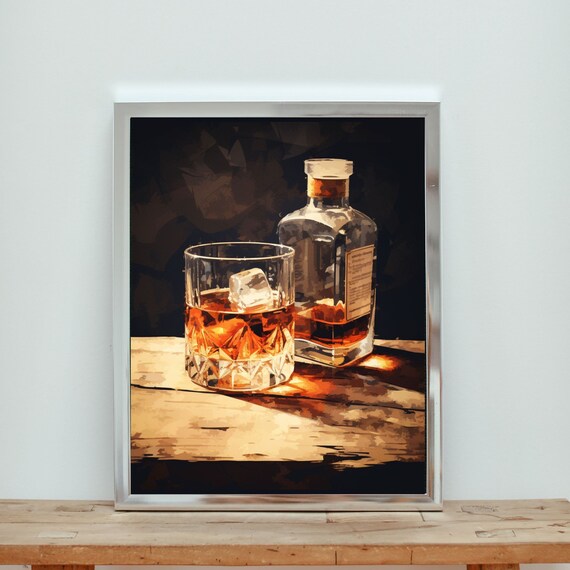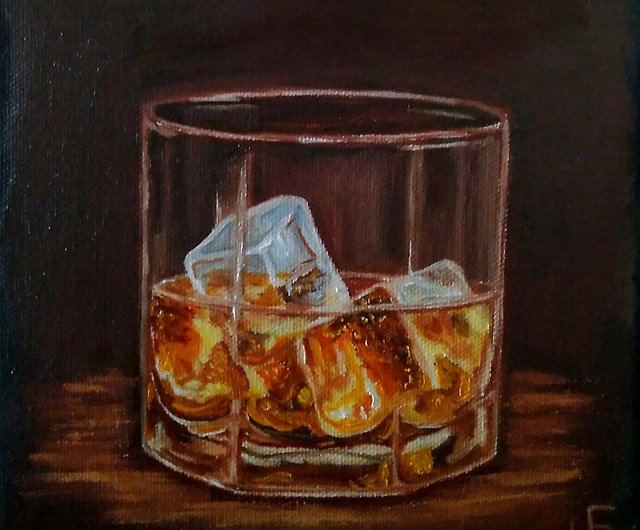Discover the World of Bourbon Art: A Journey Via Society and Craftsmanship
Discover the World of Bourbon Art: A Journey Via Society and Craftsmanship
Blog Article
The Importance of Whiskey Art in Celebrating Heritage and Workmanship in the Beverage Industry
The detailed partnership in between scotch art and the celebration of heritage and craftsmanship within the drink market can not be overemphasized. With thoughtfully designed bottles and tags, bourbon brands encapsulate their historic roots and the artisanal skills that specify their production methods.
The Historic Roots of Whiskey
At the heart of bourbon's appeal lies an abundant tapestry of historical origins that trace back to ancient human beings. The origins of bourbon can be linked to the distillation practices of the Sumerians and Babylonians around 2000 BCE, where very early forms of fermented grain beverages began to emerge. It was in the Middle Ages that the art of purification developed significantly, especially in Ireland and Scotland, leading to the creation of scotch as we recognize it today.
The term "scotch" itself stems from the Gaelic word "uisce beatha," implying "water of life." This expression underscores the cultural value of whiskey in Celtic cultures, where it was often related to routines, celebrations, and common bonding. By the 15th century, purification became an acknowledged craft within reclusive communities, leading the way for the facility of lawful distilleries.
As profession routes broadened, scotch's appeal expanded, transcending regional limits and recording the passion of connoisseurs worldwide. Whiskey Art. This historic trip mirrors not only the craftsmanship behind whiskey production however likewise its indispensable role in cultural and social contexts, marking it as a considerable beverage throughout history
Artistic Expression in Branding
Scotch branding stands as a compelling crossway of creativity and business, where aesthetic identification plays a critical role fit customer perception. The aesthetic appeals of scotch labels, packaging, and advertising materials reflect not only the brand name's tale yet likewise its core worths and heritage. With creative expression, distilleries convey a narrative that reverberates with customers, stimulating emotions and sparking connections.
Using color, typography, and images in branding serves to set apart products in a saturated market. Conventional concepts may stimulate a feeling of authenticity and workmanship, while modern styles can indicate development and forward-thinking. This critical artistic direction improves brand name recognition and loyalty, enabling consumers to create a personal connection with the scotch they pick.
Additionally, creative expression in branding commonly functions as an event of local heritage. Distilleries regularly include local symbols or historic recommendations into their layouts, creating a sense of place that invites consumers to take part in a more comprehensive cultural experience. Inevitably, the virtuosity behind whiskey branding not only improves visual allure but likewise enriches the overall story of the brand name, fostering a deeper recognition for the craftsmanship and heritage ingrained in each container.
Craftsmanship in Container Style
The creativity noticeable in bourbon branding extends beyond visual identity to incorporate the workmanship associated with bottle design. Each bottle functions as a vessel not just for the spirit within, however additionally for the story it informs about its tradition, beginning, and quality. The layout process needs meticulous attention to detail, as elements such as product, closure, and shape contribute significantly to the total perception of the bourbon.
Workmanship in container design entails choosing top notch glass that can improve the bourbon's color and quality, while likewise offering a tactile experience for the customer. The shape of the container need to be both functional and cosmetically enticing, often mirroring the heritage of the brand. Many distilleries go with unique forms or embossed logo designs that stimulate a sense of credibility and history.
Furthermore, the label design and typography play a vital function in communicating the brand's story. Realism Art. A well-crafted bottle not only mesmerizes the customer's eye yet additionally enhances the brand name's dedication to top quality and practice. By doing this, the workmanship of container style comes to be an essential facet of the whiskey experience, merging virtuosity with an extensive respect for heritage
Social Importance of Bourbon Art
Commemorating custom and craftsmanship, the social importance of bourbon art goes beyond mere aesthetics, linking with the social and historical narratives of the regions where it comes from. Each container works as a canvas, portraying the unique tales, mythology, and practices that have actually shaped local whiskey-making practices. The intricate layouts commonly show the heritage of the distillers, incorporating signs and my link motifs that reverberate with the culture and worths of their neighborhoods.

Additionally, whiskey art plays a crucial function in public gatherings and parties, acting as a concrete web link in between people and their shared experiences. By appreciating the creativity in bourbon packaging, consumers cultivate a much deeper understanding and regard for the craft, inevitably improving their satisfaction of the beverage check over here itself.
Modern Trends in Scotch Presentation
In the last few years, the discussion of scotch has developed to mirror modern tastes and fads while still recognizing typical workmanship - Whiskey Art. Distilleries are significantly concentrating on visual components that enhance the overall alcohol consumption experience, bridging the void between heritage and modernity
Cutting-edge container designs have actually emerged, frequently including sustainable materials and artistic tags that tell engaging tales. Lots of brands now collaborate with local artists, infusing their products with distinct aesthetic expressions that reverberate with consumers. In addition, limited-edition releases are often packaged in collectible containers, adding value and charm for lovers.

Conclusion
In conclusion, bourbon art offers as an essential avenue for sharing the heritage and workmanship intrinsic in the beverage industry. Through intricate branding, innovative container layouts, and culturally substantial creative aspects, whiskey brand names properly recognize their customs and connect with consumers.


Workmanship in bottle design includes selecting high-grade glass that can improve the whiskey's color and quality, while likewise supplying a tactile experience for the customer. In this way, the craftsmanship of bottle layout becomes a crucial facet of the whiskey experience, combining virtuosity with a profound respect for heritage.
In verdict, whiskey art serves as a crucial avenue for expressing the heritage and craftsmanship intrinsic in the drink industry.
Report this page